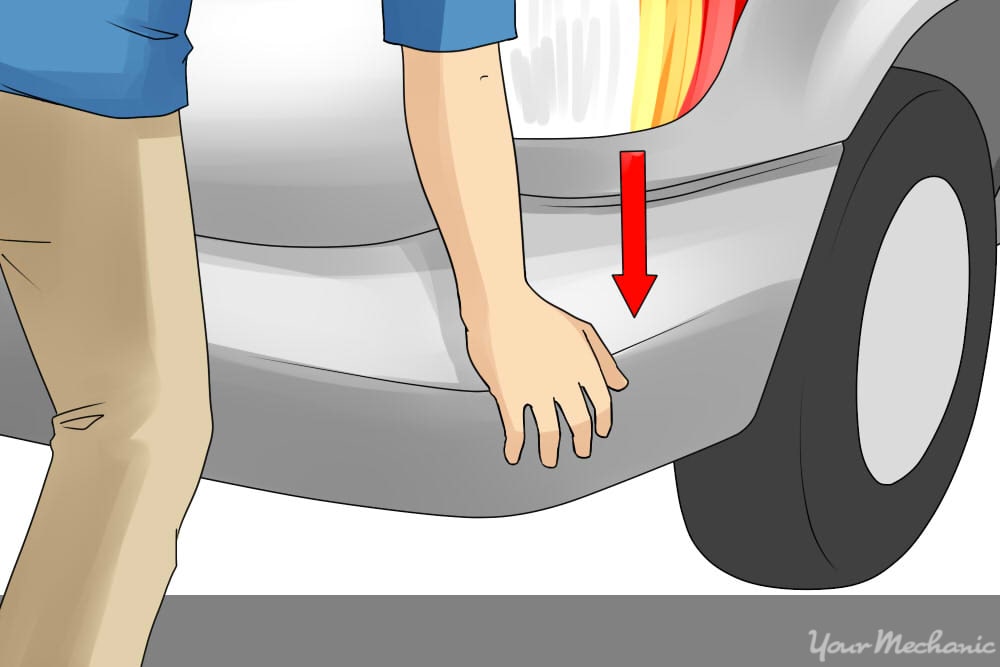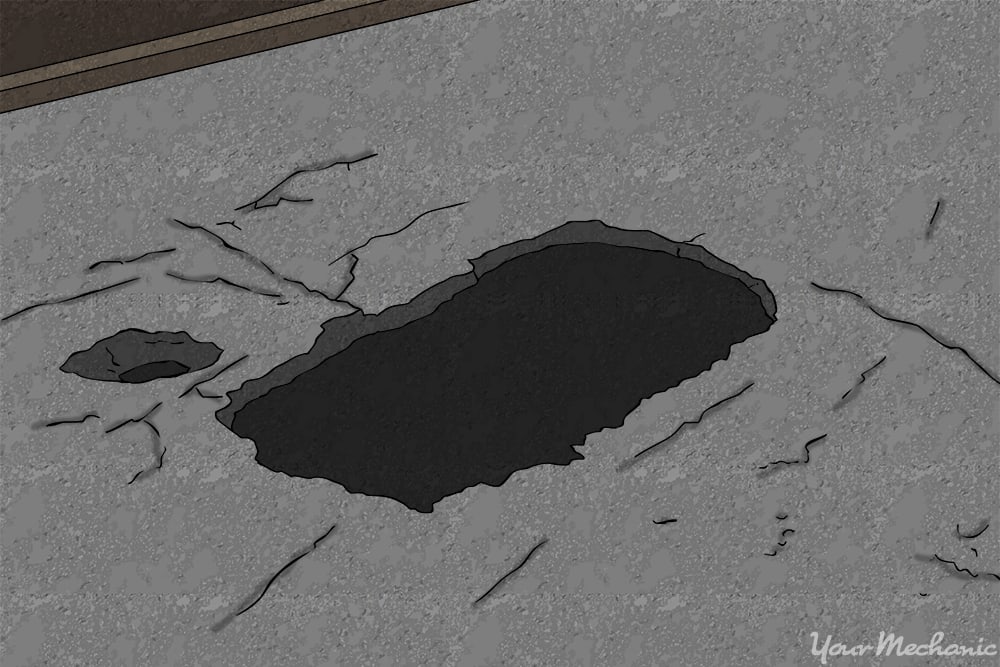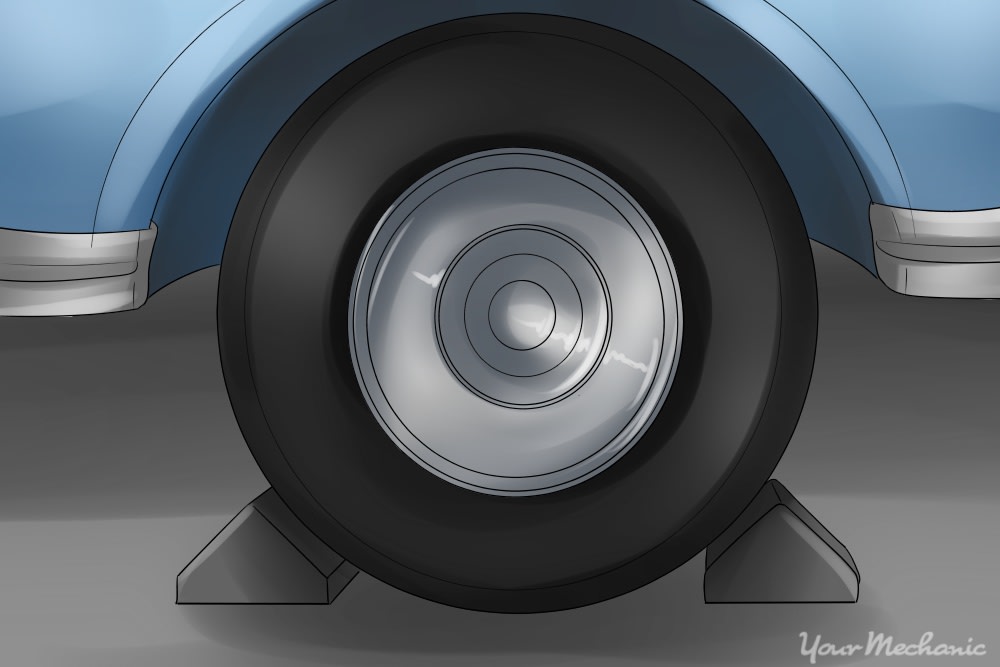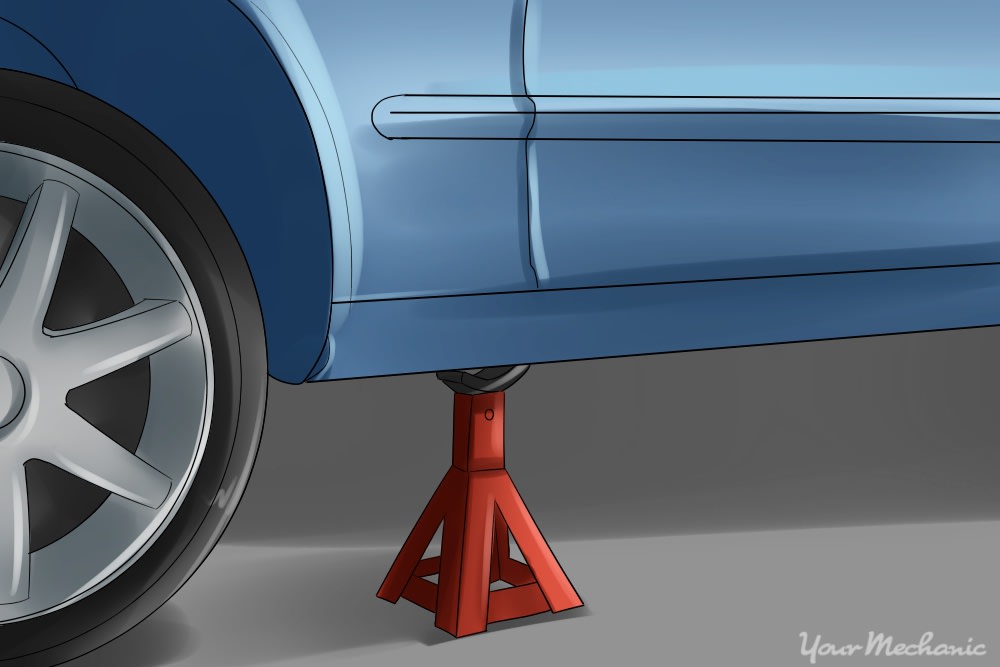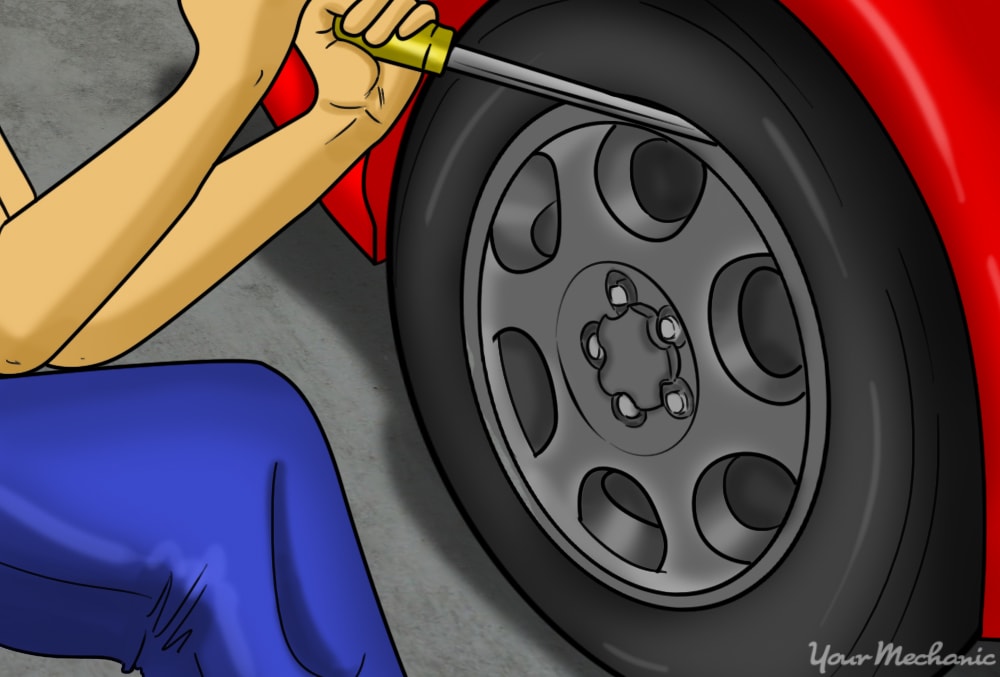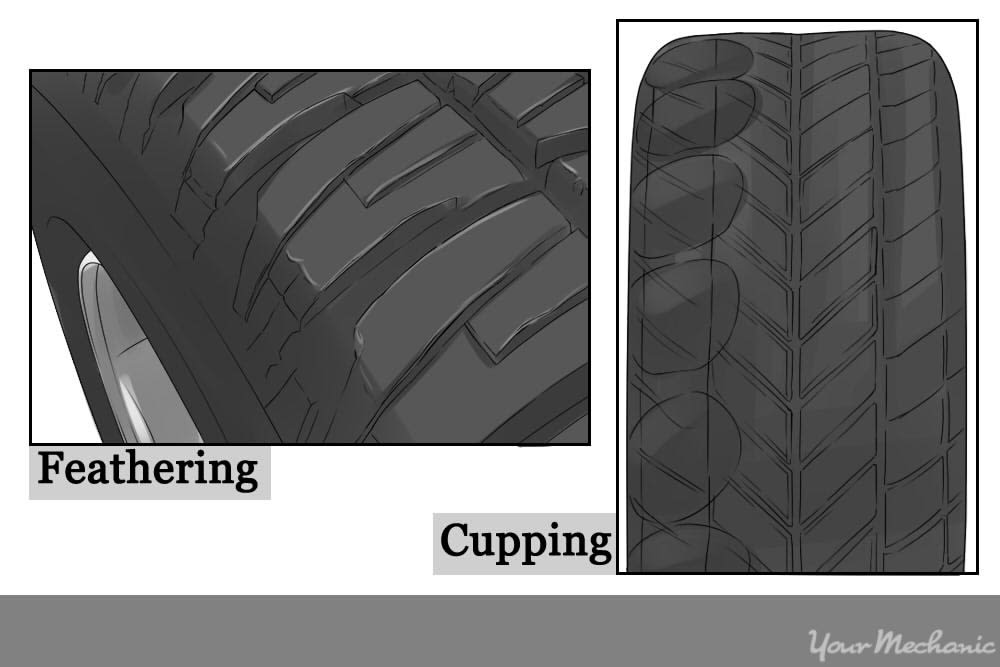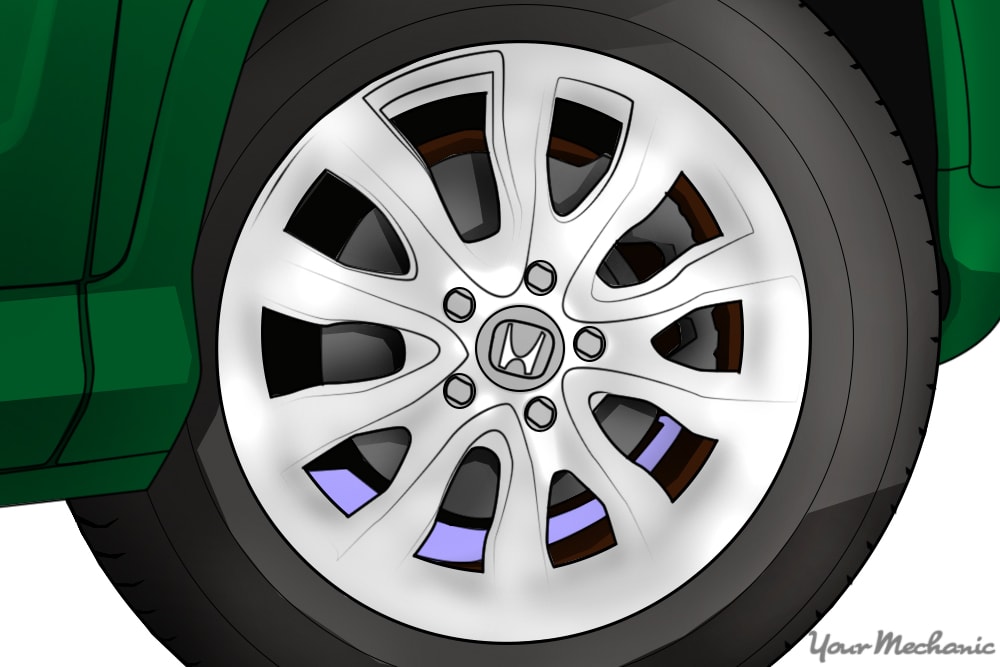

When it comes to driving, you want to feel as safe as possible. So when you hear a clicking or popping sound coming from the car tires or wheels, it's natural to be concerned. All vehicles need to be safe before operating them on any road with other traffic.
Clicking or popping sounds that come from the wheels could result from any the following components:
- Damaged constant velocity joint
- Worn or damaged struts
- Loosely or broken hubcaps
- Worn drive belt or worn drive belt tensioner
- Tires of the wrong size or worn with cupping
- Suspension being loose
When it comes to diagnosing a clicking or popping sound from the wheels, a road test is required to determine the sound that's being emitted. Before you take the vehicle on a road test, you would need to perform a walk around the vehicle to ensure that there is nothing falling off the vehicle.
Look under the vehicle to see if any parts to the vehicle has broken off. If something is broken on the vehicle that is a safety item, you will need to address the item first before conducting a road test. Also, be sure to check the tire pressure. This keeps the vehicle from overheating the tires and allows you to do a correct test.
Part 1 of 6: Diagnosing a damaged constant velocity joint
Step 1: Push down on the front and rear of the vehicle. This will check to see if the joints are locked up in a vertical motion.
Step 2: Start the engine. Turn the wheels from lock to lock going from right to left. This will check to see if the joints are locked up in a horizontal motion.
Step 3: Drive the vehicle around the block. Make turns where you can turn the steering wheel all the way in a direction. Listen for any clicking or popping sounds.
Usually the outer joint takes all of the abuse and emits as clicking or popping sound during hard turns. This is because the balls in the joint are worn and have no lubrication. The balls fit into a cage that allow them to rotate as the wheels are rotating. The constant velocity joints make angles to an astonishing 47 degrees.
Step 4: Drive the vehicle over bumps or potholes. This will check to see if the CV joints will create a clicking or popping sound as the wheels are rotating and moving in a vertical direction.
After the road test, you will need to prep the vehicle to check the constant velocity shafts to ensure that they need to be replaced.
Preparing the vehicle to check the CV shafts
Materials Needed
- Flashlight
- Jack 2 ton or bigger
- Jack stands
- Wheel chocks
Step 1: Park your vehicle on a flat, hard surface. Make sure that the transmission is in park (for automatics) or in 1st gear (for manuals).
Step 2: Place wheel chocks around the rear tires that will be remaining on the ground. Engage the parking brake to the lock the rear tires from moving.
Step 3: Raise the vehicle. Using a floor jack that is recommended for the weight of the vehicle, lift under the vehicle at its specified jacking points until the wheels are completely off the ground.
Step 4: Place the jack stands. The jack stands should go under the jacking point locations. Then lower the vehicle onto the jack stands. For most modern cars, the jacking points for jack stands will be on the pinch weld just under the doors along the bottom of the car.
Checking the condition of the CV shaft
Step 1: Grab a flashlight and look at the joints boots. See if the boots are torn or missing any band clamps.
- Note: If there is grease around the boots and the boots are off of the joints or have a cut in them, you can stop the diagnosis for that constant velocity shaft. Once the boot is off of torn, after 12 seconds of vehicle movement at normal conditions the CV joints become contaminated and begin immediate internal deterioration.
Step 2: Grab the constant velocity shaft and push up and pull down on it. This will check to see if there is excessive movement in the shaft joints.
Lowering the vehicle after performing the diagnosis
Step 1: Collect all tools and your creeper and place them out of the way.
Step 2: Raise the vehicle. Using a floor jack that is recommended for the weight of the vehicle, lift under the vehicle at its specified jacking points until the wheels are completely off the ground.
Step 3: Remove the jack stands and keep them far away from the vehicle.
Step 4: Lower the vehicle to where all four wheels are on the ground. Pull out the jack and put it aside.
Step 5: Remove the wheel chocks from the rear wheels and put the aside.
Have your damaged constant velocity joint by a professional mechanic if it needs to be replaced.
Part 2 of 6: Diagnosing worn or damaged struts
Step 1: Push down on the front and rear of the vehicle. This will check to see if the strut shocks are performing correctly. When the strut housing becomes dented, the strut shock will pop in and out of the strut tube.
Step 2: Start the engine. Turn the wheels from lock to lock going from right to left. This will check to see if the bearing plates will make a clicking or popping noise while the vehicle is stationary.
Step 3: Drive the vehicle around the block. Make turns where you can turn the steering wheel all the way in a direction. Listen for any clicking or popping sounds.
The struts are designed to turn with the wheels as the struts have a mounting surface for the wheel hub. While checking the struts for sounds, feel the steering wheel for any movement as if the mounting bolts to the wheel hubs could be loose making the wheels move in and out of alignment.
Step 4: Drive the vehicle over bumps or potholes. This checks the condition of the strut shaft and if there are any broken internal parts or dented shell.
- Note: If you see oil present on the housing of the strut, you would need to consider replacing the strut with a new or rebuilt strut.
Preparing the vehicle to check the struts
Materials Needed
- Flashlight
- Jack 2 ton or bigger
- Jack stands
- Pry bar
- Wheel chocks
Step 1: Park your vehicle on a flat, hard surface. Make sure that the transmission is in park (for automatics) or in 1st gear (for manuals).
Step 2: Place wheel chocks around the rear tires that will be remaining on the ground. Engage the parking brake to the lock the rear tires from moving.
Step 3: Raise the vehicle. Using a floor jack that is recommended for the weight of the vehicle, lift under the vehicle at its specified jacking points until the wheels are completely off the ground.
Step 4: Place the jack stands. The jack stands should go under the jacking point locations. Then lower the vehicle onto the jack stands. For most modern cars, the jacking points for jack stands will be on the pinch weld just under the doors along the bottom of the car.
Checking the condition of the struts
Step 1: Grab a flashlight and look at the struts. See if the housing to the struts are dented or leaking oil. Look at the bearing plate to see if there it is separating. Check the mounting bolts to the hub and ensure that they are tight using a wrench.
Step 2: Grab a long pry bar. Pry up on the tires and check for any movement. Be sure to see where the movement is coming from. The wheels can move around if the ball joint is worn, if the mounting hub bolts are loose, or if the hub bearing is worn or loose.
Step 3: Open the hood to the engine compartment. Locate the mounting studs and nuts to the bearing plate. Check to see if the bolts are tight using a wrench.
Lowering the vehicle after performing the diagnosis
Step 1: Collect all tools and your creeper and place them out of the way.
Step 2: Raise the vehicle. Using a floor jack that is recommended for the weight of the vehicle, lift under the vehicle at its specified jacking points until the wheels are completely off the ground.
Step 3: Remove the jack stands and keep them far away from the vehicle.
Step 4: Lower the vehicle to where all four wheels are on the ground. Pull out the jack and put it aside.
Step 5: Remove the wheel chocks from the rear wheels and put the aside.
Have your worn or damaged struts replaced if necessary.
Part 3 of 6: Diagnosing loosely or broken hubcaps
Step 1: Drive the vehicle around the block. Make turns where you can turn the vehicle in multiple directions. Listen for any clicking or popping sounds.
Step 2: Drive the vehicle over bumps or potholes. Listen for any clicking or popping sounds that can permit as the hubcaps move around.
Step 3: Drive the vehicle to speeds of 40 to 45 miles per hour. If the hubcaps are cracked, they will make a clicking or popping sound while wind is passing through the hubcap at a great speed.
Preparing the vehicle to check the hubcaps
Materials Needed
- Flashlight
- Large flat screwdriver
- SAE/Metric socket set
- Wheel chocks
Step 1: Park your vehicle on a flat, hard surface. Make sure that the transmission is in park (for automatics) or in 1st gear (for manuals).
Step 2: Place wheel chocks around the rear tires that will be remaining on the ground. Engage the parking brake to the lock the rear tires from moving.
Checking the condition of the hubcaps
Step 1: Grab a flashlight and look at the hubcaps. Look at the hubcap for any damage or cracks. Also, look at the hubcap to see if it was mounted correctly.
Sometimes when wheels are rotated or tires are replaced the hubcaps are installed incorrectly and cover up the valve stem to the tire. This will create a wobble and make the hubcap vibrate which will consult to creating cracks.
Step 2: Remove the hubcap. If you have a hubcap that is mounted with plastic screw nuts, use a socket set to remove the hubcap. Check the mounting tabs or the inside ring for any damage.
Step 3: Put the hubcap back on. If the hubcap was out of location, you would need to put it on correctly where the valve stem to the tire is visible. Then remove the wheel chocks and take the vehicle for another road test to verify that was the problem.
If the hubcap still makes clicking or popping sounds, then there may be a crack in it. Put the wheel chocks back on the vehicle and recheck for any cracks using your flashlight.
Cleaning up after performing the diagnosis
Step 1: Collect all tools and your creeper and place them out of the way. Remove the wheel chocks from the rear wheels and put the aside.
Part 4 of 6: Diagnosing a worn drive belt or a worn drive belt tensioner
Step 1: Put the key in the ignition and start the engine. Allow the engine to run for a few moments, then throttle the engine quickly.
Step 2: As the engine rises up and down in RPM, listen for a clicking or popping sound. As the drive belt or drive belt tensioner become worn, the belt stretches out and slaps the frame, fender, or a bracket.
Preparing the vehicle to check the drive belt or drive belt tensioner
Materials Needed
- Flashlight
- Wheel chocks
Step 1: Park your vehicle on a flat, hard surface. Make sure that the transmission is in park (for automatics) or in 1st gear (for manuals).
Step 2: Place wheel chocks around the rear tires that will be remaining on the ground. Engage the parking brake to the lock the rear tires from moving.
Checking the condition of the drive belt or drive belt tensioner
Step 1: Open the hood to the vehicle’s engine compartment. Grab a flashlight and check the drive belt and drive belt tensioner condition.
Step 2: With the engine off, grab the drive belt and pull on it. The belt should not move easy and should only move its width in distance.
Step 3: With the engine running, have someone step on the accelerator quickly. As the engine rises up and down, watch the belt and tensioner with a flashlight to see what the drive belt and drive belt tensioner is doing.
Cleaning up after performing the diagnosis
Step 1: Collect all tools and your creeper and place them out of the way. Remove the wheel chocks from the rear wheels and put the aside.
Have your worn drive belt or worn drive belt tensioner replaced if necessary.
Part 5 of 6: Diagnosing tires of the wrong size or worn with cupping
Materials Needed
- Flashlight
Step 1: Grab a flashlight and visually check the tires of the vehicle. Look for any abnormal wear to the tires as the vehicle is sitting at rest.
Step 2: Drive the vehicle around the block. Make turns where you can turn the steering wheel all the way in a direction. Listen for any clicking or popping sounds. The tires are designed to make contact with the road at all times and create a cushion when driving.
If the tires are cupped or have different wear patterns, then the tire may not stay connected to the road making the ride uncomfortable with clicking or popping noises. While checking the tires for sounds, feel the steering wheel for any movement as if the tires move in and out of alignment with abnormal tread wear.
Step 4: Drive the vehicle over bumps or potholes. This checks the condition of the rebound response within the tires and shocks to the vehicle. Shocks are designed to keep the tires in contact with the road at all times. However, when the tires have cupping, them tires tend to feel bumpy and make the driver think that there is a problem with a shock absorber.
Preparing the vehicle to check the tires
Materials Needed
- Flashlight
- Jack 2 ton or bigger
- Jack stands
- Wheel chocks
Step 1: Park your vehicle on a flat, hard surface. Make sure that the transmission is in park (for automatics) or in 1st gear (for manuals).
Step 2: Place wheel chocks around the rear tires that will be remaining on the ground. Engage the parking brake to the lock the rear tires from moving.
Step 3: Raise the vehicle. Using a floor jack that is recommended for the weight of the vehicle, lift under the vehicle at its specified jacking points until the wheels are completely off the ground.
Step 4: Place the jack stands. The jack stands should go under the jacking point locations. Then lower the vehicle onto the jack stands. For most modern cars, the jacking points for jack stands will be on the pinch weld just under the doors along the bottom of the car.
Checking the condition of the tires
Step 1: Grab your flashlight and visually check the tires. Remove the parking brake if you are working on the rear tires and put the transmission in neutral if you are working on the front tires to a front wheel drive vehicle. You may have to put the transmission in neutral if working on the rear tires. It all depends if you have an automatic or manual transmission.
Step 2: Rotate the tires and look for any cupping of the tread. Also look at the tread for any other patterns that would indicate an alignment issue.
- Note: If the tires are cupping on the tread, then the shock absorbers are worn out and not keeping the tires from bouncing during coil oscillations. You would need to replace the tires and shock absorbers. If the shock absorbers have already been replaced, then the tires need to be replaced for safety.
Lowering the vehicle after performing the diagnosis
Step 1: Collect all tools and your creeper and place them out of the way.
Step 2: Raise the vehicle. Using a floor jack that is recommended for the weight of the vehicle, lift under the vehicle at its specified jacking points until the wheels are completely off the ground.
Step 3: Remove the jack stands and keep them far away from the vehicle.
Step 4: Lower the vehicle to where all four wheels are on the ground. Pull out the jack and put it aside.
Step 5: Remove the wheel chocks from the rear wheels and put the aside.
Have your tires inspected if they're the wrong size or worn with cupping.
Part 6 of 6: Diagnosing loose suspension
Materials Needed
- Flashlight
Suspension parts tend to wear out on vehicles over time during normal road conditions. Most vehicles are driven on other areas rather than just on roads. Most operators tend to think that cars are like trucks and can take off-road adventures with no problems. This results in wearing out the suspension parts more frequently.
Vehicles with massive suspension lifts are in danger of suspension parts failing. There are lots of suspension parts involved with vehicles that are lifted and require more attention than a standard suspension system.
Step 1: Grab a flashlight and visually check the suspension of the vehicle. Look for any damaged or broken suspension parts.
- Note: If you see any broken suspension parts, you will need to have it repaired prior to test driving the vehicle. This would result is a safety matter that needs to be addressed.
Step 2: Drive the vehicle around the block. Listen for any clicking or popping sounds.
Step 3: Drive the vehicle over bumps or potholes. This checks the condition of the suspension as the tires and suspension moves around.
Step 4: Step on the brakes hard and accelerate hard from a stop. This will check for any horizontal movement within the suspension system. A loose suspension bushing may not transmit noise when in normal operation, but can move around during a hard stop and fast take off.
- Note: If your vehicle has been in an accident before, the suspension could be set back on the frame to fix an alignment issue. The set back can result in problems with the suspension coming loose or deteriorating the bushing faster than normal.
Preparing the vehicle to check the suspension
Materials Needed
- Flashlight
- Jack (2 ton or bigger)
- Jack stands
- Long pry bar
- Wheel chocks
Step 1: Park your vehicle on a flat, hard surface. Make sure that the transmission is in park (for automatics) or in first gear (for manuals).
Step 2: Place wheel chocks around the rear tires that will be remaining on the ground. Engage the parking brake to the lock the rear tires from moving.
Step 3: Raise the vehicle. Using a floor jack that is recommended for the weight of the vehicle, lift under the vehicle at its specified jacking points until the wheels are completely off the ground.
Step 4: Place the jack stands. The jack stands should go under the jacking point locations. Then lower the vehicle onto the jack stands. For most modern cars, the jacking points for jack stands will be on the pinch weld just under the doors along the bottom of the car.
Checking the condition of the suspension
Step 1: Grab a flashlight and look at the suspension system. See if the parts are damaged, bent, or loose. Check the mounting bolts to the knuckle and ensure that they are tight using a wrench.
Step 2: Grab a long pry bar. Pry up on the tires and check for any movement. Be sure to see where the movement is coming from. The wheels can move around if the ball joint is worn, if the mounting knuckle bolts are loose, or if the hub bearing is worn or loose.
Step 3: Open the hood to the engine compartment. Locate the mounting bolts to the suspension arms. Check to see if the bolts are tight using a wrench.
- Note: If your suspension is a strut then you need to check the strut for any damage or looseness. Refer back to the section of this article about worn or damaged struts.
Lowering the vehicle after performing the diagnosis
Step 1: Collect all tools and your creeper and place them out of the way.
Step 2: Raise the vehicle. Using a floor jack that is recommended for the weight of the vehicle, lift under the vehicle at its specified jacking points until the wheels are completely off the ground.
Step 3: Remove the jack stands and keep them far away from the vehicle.
Step 4: Lower the vehicle to where all four wheels are on the ground. Pull out the jack and put it aside.
Step 5: Remove the wheel chocks from the rear wheels and put the aside.
Have your suspension inspected if it's loose.
Fixing the clicking or popping sound from the wheels can help improve the drivability of the vehicle.



